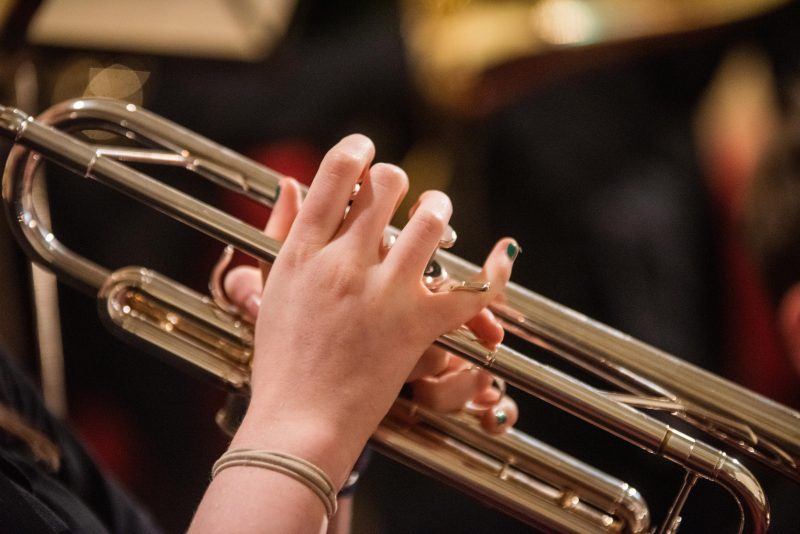Top Tips for Planning Teaching in Schools this September
21st July 2020

Safe Face to Face Music Learning in Schools with Southampton Music Hub
Returning to teach music in schools this September? Southampton Music Hub share with us their to top tips for ensuring it’s a positive experience here based on their experience of returning to face to face teaching in the Summer term:
What we did
- Prepare teachers to go in as pairs. Southampton Music Hub found they had extra capacity and sending in pairs of teachers allows for a ‘safety in numbers’ approach which is reassuring to staff. It also means there’s additional support in the classroom significantly reducing the need to send a student to someone else in the building for behavioural reasons.
- Create PPE packs for each teacher. In Southampton these contained tissues, gloves, masks, spray and hand gel.
- Get the schools risk assessment beforehand that way the team and teacher’s can see what their procedures are before getting there. Music Mark members can access music teaching risk assessments here.
- Change how you plan. Southampton music service opted to have no musical resources used due to risk assessments and the tight turn around between classes. Short, sharp tasks to keep pupils involved due to a face mask changing the way that you would normally manage behaviour were given priority.
- Meetings with all staff to go through protocols, risk assessments, what they needed to do, what they should expect, anxieties and airing issues beforehand. This can of course be done remotely before getting into the school building.
Four positives outcomes in the Summer Term from returning well prepared:
- There was buy in and support from senior management. The headteacher and deputy met Hub service teachers at the door – they were completely supportive but very relaxed putting everyone at their ease.
- The children were prepared for and comfortable with teachers wearing masks
- Teaching in masks was not actually as bad as feared. Experiment with the style of mask that works for you. You want one that’s secure and fits well (securely over the nose, particularly if you’re a glasses wearer to avoid steaming up!)
- At no time did the teachers or students feel unsafe. With proper planning, preparation and the completion of risk assessments, it’s possible to create a safe and positive learning environment.
What Southampton Music Hub learnt:
- Face to face teaching is totally possible
- Using resources is possible with groups as long as there is time built in the day for cleaning and resources aren’t used with concurrent groups or shared between groups.
- Planning needs to reflect current possibilities in terms of resources and lesson content.
- Pupils love having music teachers there – there is an absolute need for this to happen in schools, especially when considering the mental health of pupils.
- Ask schools to prepare a short leaflet for peripatetic teachers letting visitors know key information like which toilets to use and safety protocol.
- Be prepared for disclosures. There were several disclosures made in one term – anxieties of pupils were clear. There is a need for additional input from educational Psychologists in order to understand the anxieties that children face and also the anxieties facing teachers as they return to work.
- Risk assessments are essential and must be maintained as live documents in line with the latest government guidance and shared and developed in consultation with staff. The most recent risk assessment from Southampton Music Hub is available here and the Music Unlocked Guide from Music Mark is available here.
How these findings have helped preparations for September
- Involve staff as much as possible: They need to have ownership of plans going forward so that they feel empowered. We have involved them in the compilation of the risk assessment and in weekly drop in sessions for staff to discuss anxieties
- Communications, what works and what doesn’t: Staff members have reacted better to an FAQ sheet that has been compiled following the questions that have been asked this term which is much more accessible for staff rather than the risk assessment.
- Maintain relationships with schools – communication is key. We have involved schools in preparing for September through the compilation of a music recovery guide and how this relates to the wider hub offer. Schools are aware of what is possible and risk assessments are shared both ways in order to make sure we are happy with future staff working environments. Schools have our current working risk assessment (although there are obvious gaps regarding DfE guidance) and this is informing their own risk assessments for music. sent to schools making schools aware of what is possible rather than the other way around – very much driving the response to ensure that both staff and pupils are safe.
- Don’t be afraid to state what YOU think is possible. Schools need to understand what you think is feasible, not what they want. There is a need to consider safety over finances during negotiations.
- Safety is our priority. Our priority is the safety and wellbeing of our staff, pupils and schools. We have changed our timetable to reflect this. We have taken the decision to maximise the length of time teachers spend in a school- limiting movement between schools. This has meant staff have needed training and changing the content of first access to make it possible, consideration of other instruments taught, combining online and face to face teaching – the list is endless, and will probably mean another rewrite of the timetable in January.
- Developing resources that are interchangeable between online and face to face in order to make sure that we maintain relationships with schools throughout the next academic year. Again, a large body of training for our staff.
- Staff need to be empowered to work in a new and different way. There are multiple CPD needs that mean we have extended our training window in September to facilitate these and allow staff room to forward plan and trail resources on each other.
This article is a starting point to reassure others that returning to face to face teaching is possible and to encourage music services to consider the best ways to plan for a safe and positive return.
